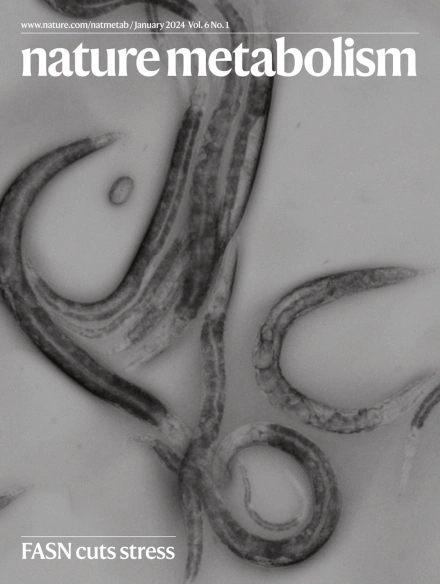在进食、禁食和饥饿状态之间的代谢转变过程中,肝细胞糖异生的空间可塑性
IF 20.8
1区 医学
Q1 ENDOCRINOLOGY & METABOLISM
引用次数: 0
摘要
肝细胞沿着门静脉三联体和中央静脉之间的空间轴排列,形成功能重复的单位,称为小叶。肝细胞根据其在小叶中的位置执行不同的代谢功能。通过肝小叶的肝细胞单细胞分析表明,糖异生基因表达在摄食状态下相对较低,在禁食初期门静脉周围肝细胞中逐渐增加。随着禁食的进行,中央心周肝细胞的糖异生基因表达和糖异生活性也增加,在进入饥饿状态后,中央心周肝细胞表现出与门静脉周围肝细胞相似的糖异生基因表达和活性。与此同时,饥饿抑制经典β-catenin信号传导并分别调节中央周围谷氨酰胺合成酶和门静脉周围谷氨酰胺酶的表达,从而增强谷氨酰胺与葡萄糖的结合。因此,肝细胞糖异生基因表达和葡萄糖产生在空间和时间上在肝小叶上具有可塑性,强调了在全器官水平上定义肝脏胰岛素抵抗和葡萄糖产生的复杂性,以及特定的禁食或进食条件。本文章由计算机程序翻译,如有差异,请以英文原文为准。


Spatial hepatocyte plasticity of gluconeogenesis during the metabolic transitions between fed, fasted and starvation states
Hepatocytes are organized along a spatial axis between the portal triad and the central vein to form functionally repetitive units known as lobules. The hepatocytes perform distinct metabolic functions depending on their location within the lobule. Single-cell analysis of hepatocytes across the liver lobule demonstrates that gluconeogenic gene expression is relatively low in the fed state and gradually increases in the periportal hepatocytes during the initial fasting period. As fasting progresses, pericentral hepatocyte gluconeogenic gene expression and gluconeogenic activity also increase and, following entry into a starvation state, the pericentral hepatocytes show similar gluconeogenic gene expression and activity to the periportal hepatocytes. In parallel, starvation suppresses canonical β-catenin signalling and modulates the expression of pericentral and periportal glutamine synthetase and glutaminase, respectively, resulting in enhanced incorporation of glutamine into glucose. Thus, hepatocyte gluconeogenic gene expression and glucose production are spatially and temporally plastic across the liver lobule, underscoring the complexity of defining hepatic insulin resistance and glucose production on a whole-organ level, as well as for a particular fasted or fed condition. The authors use single-cell analyses to demonstrate the spatiotemporal plasticity of hepatocyte gluconeogenesis, highlighting the complexity of hepatic glucose homeostasis across states of feeding, fasting and starvation.
求助全文
通过发布文献求助,成功后即可免费获取论文全文。
去求助
来源期刊

Nature metabolism
ENDOCRINOLOGY & METABOLISM-
CiteScore
27.50
自引率
2.40%
发文量
170
期刊介绍:
Nature Metabolism is a peer-reviewed scientific journal that covers a broad range of topics in metabolism research. It aims to advance the understanding of metabolic and homeostatic processes at a cellular and physiological level. The journal publishes research from various fields, including fundamental cell biology, basic biomedical and translational research, and integrative physiology. It focuses on how cellular metabolism affects cellular function, the physiology and homeostasis of organs and tissues, and the regulation of organismal energy homeostasis. It also investigates the molecular pathophysiology of metabolic diseases such as diabetes and obesity, as well as their treatment. Nature Metabolism follows the standards of other Nature-branded journals, with a dedicated team of professional editors, rigorous peer-review process, high standards of copy-editing and production, swift publication, and editorial independence. The journal has a high impact factor, has a certain influence in the international area, and is deeply concerned and cited by the majority of scholars.
 求助内容:
求助内容: 应助结果提醒方式:
应助结果提醒方式:


